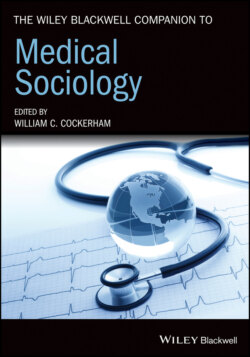Читать книгу The Wiley Blackwell Companion to Medical Sociology - Группа авторов - Страница 35
Pierre Bourdieu
ОглавлениеOnce ranked as the leading intellectual in France, Bourdieu (1984) focused on how the routine practices of individuals are influenced by the external structure of their social world and how these practices, in turn, reproduce that structure. Through his key concept of habitus, Bourdieu connects social practices to culture, structure, and power (Swartz 1997). Bourdieu (1990) describes the habitus as a mental scheme or organized framework of perceptions (a structured structure operating as a structuring structure) that predisposes the individual to follow a particular line of behavior as opposed to others that might be chosen. These perceptions are developed, shaped, and maintained in memory and the habitus through socialization, experience, and the reality of class circumstances. While the behavior selected may be contrary to normative expectations and usual ways of acting, behavioral choices are typically compatible with the dispositions and norms of a particular group, class, or the larger society; therefore, people tend to act in predictable and habitual ways even though they have the capability to choose differently. Through selective perception, the habitus adjusts aspirations and expectations to “categories of the probable” that impose boundaries on the potential for action and its likely form.
Of all Bourdieu’s works, the one most relevant for medical sociologists remains his book Distinction (1984), in which he systematically accounts for the patterns of cultural consumption and competition over definitions of taste of the French social classes. It includes an analysis of food habits and sports that describes how a class-oriented habitus shaped these particular aspects of health lifestyles. Cockerham (1999, 2000, 2007; Cockerham et al. 1997) follows Bourdieu’s theoretical framework in his theory of health lifestyles and in identifying negative health lifestyles as the primary social determinant of ongoing downturn in life expectancy in Russia. The group most responsible for reduced longevity are middle-age, working-class males. The living conditions of these men and their relatively low and powerless position in the social structure produced a habitus fostering unhealthy practices (heavy drinking and smoking, disregard for diet, and rejection of exercise) that resulted in a lifestyle promoting heart disease, accidents, and other health problems leading to a shortened life span. These behaviors were norms established through group interaction, shaped by the opportunities available to them, and internalized by the habitus. The structure of everyday life both limited and molded health-related choices to the extent that lifestyles led to premature deaths.
According to Williams (1995), the merit of Bourdieu’s analysis for understanding the relationship between class and health lifestyles lies in his depiction of the relative durability of various forms of health-related behavior within particular social classes and the relatively seamless fashion in which he links agency and structure. “In particular,” states Williams (1995: 601), “the manner in which his arguments are wedded to an analysis of the inter-relationship between class, capital, taste, and the body in the construction of lifestyles … is both compelling and convincing.” Although Bourdieu has been criticized for overemphasizing structure at the expense of agency and presenting an overly deterministic model of human behavior (Münch 1993), he nevertheless provides a framework for medical sociologists to conceptualize health lifestyles and for sociologists generally to address the agency–structure interface (Cockerham 2005).
